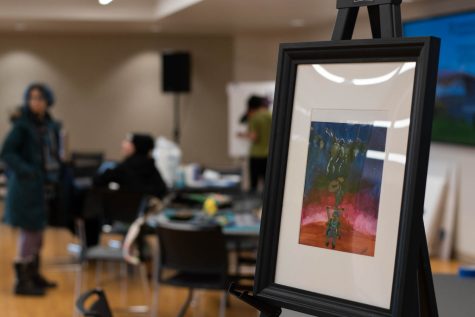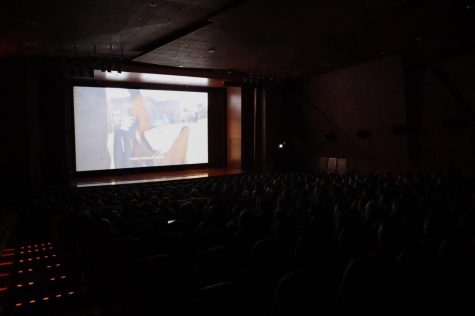They’ve got strings, can’t hold them down
October 24, 2014
Stand aside, Pinocchio. Joseph Cashore will bring to life his collection of marionettes at Jones Theatre Sunday.
The Cashore Marionettes is a puppetry performance in which Cashore presents a series of short, independent pieces using his marionette puppets.
He uses little vocals, relying on the movement of the marionettes to tell the story.
“I try to arrange the performance so that it’s sort of like a roller coaster ride of experience the audience will go through,” Cashore said.
The Cashore Marionettes is part of the WSU Performing Arts’ Main Stage Series, bringing in a broad variety of artists and styles to Daggy Hall.
Gail Siegel, director of performing arts at WSU, said the performances don’t follow a specific theme.
The focus of the main stage series is to present different experiences. These include musical theater, dramatic theatre, music, and in this case puppetry.
“I went to a booking conference last week and was able to see probably 50 different performances and connect with colleagues so we could work on booking,” Siegel said.
Siegel said she also had to do research to find these performances and work out how to get them in Pullman.
She said generally people seem to be very appreciative to experience this kind of professional performances here in Pullman rather than needing to travel to see the same quality of performance.
“I feel like it’s almost a performance piece in itself,” Siegel said. “(There are) so many things that factor in (like) scheduling dates and coinciding events.”
Cashore had previously come to Pullman around 14 years ago, and Siegel said she has worked for several years to bring him to WSU.
His performance will be the first of the main stage theatrical series.
Cashore said he got started with puppetry on accident. He made his own marionette as a child and every so often he’d notice a moment when the puppet seemed to come alive.
As he got older, he decided he wanted to make a more realistic marionette, he said.
“I knew it was tied to how it moves,” Cashore said. “(There’s a) very strong illusion that the puppets have their own life (and it) helps the audience believe in the content of the pieces.”
He said he used to go the traditional route, where he would be standing behind a backdrop so only the puppets and scenery would be visible.
However, he said he discovered over the years that his current method is more natural.
Each of Cashore’s puppets, all of which he made by hand, have their own story. There’s everything from the homeless man going through his day to the little girl constantly distracted from doing her homework.
There’s a broad range of emotions for each piece, from the humorous to the serious.
“Puppetry is one of the oldest forms of theater,” Siegel said. “The audience is actually invited and given more freedom to participate through their interpretation versus a theatrical act where the audience is being told the story.”
The Cashore Marionettes have traveled throughout the U.S. and Europe, as well as Japan and Hong Kong.
He’s performed in every state except North and South Dakota.
“The themes (in the pieces) are universal,” Cashore said.
One of the difficulties for Cashore is using the marionettes so they move the way he wants them two. Most of the puppets have at least 20 strings and some have as many as 44.
Each marionette is individually constructed using an improvised marionette control so it can do what it needs to do during performances, he said.
“I enjoy doing performances (and) the connection with the audience,” Cashore said, “when we’re all feeling the same thing at the same time.”
The show is sold out.





















